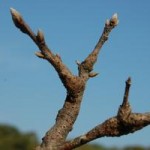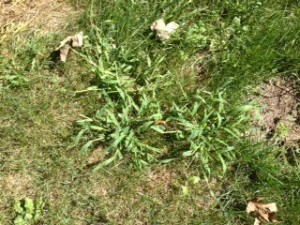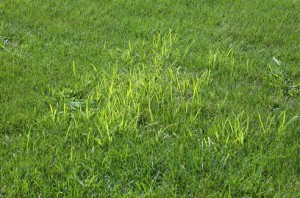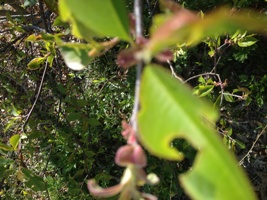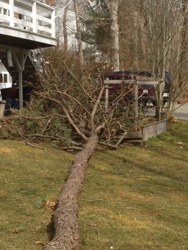every year- that is ten times as many as previously reported. Some medical professionals fear this epidemic is more widespread than AIDS and without greater awareness, more destructive.
Lyme disease is not easily diagnosed. Most people assume that without an attached tick or bullseye rash, Lyme does not exist. Below is a link to a series of short essays written by a doctor who is victim of late stage, undiagnosed Lyme disease.
Dr. Jon Sterngold Late Stage Lyme Diagnosis
The best way to beat Lyme and other tick borne illnesses is prevention. Here are some tips:
- Tall grass is a great hiding spot for small animals that carry deer ticks. These animals travel through leaf litter and carry deer ticks to your yard. Keep grass around foundations, trees, fences and structures trimmed.
- Clean up debris from around your property. Leaf litter is a haven for ticks.
- Tick checks-often times ticks hitch a ride into your home on your pet. They fall off and often times a person becomes the new host.
- The Greenskeeper offers a variety of solutions for tick control. Tick control is a great way to diminish tick populations and help to make your home safer for your pets and family.
Call today for pricing.
]]>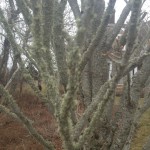
How can you not like the look of lichens?
Do you like lichens?
We recently received a phone call from a customer that her tree was being invaded by some wild fuzzy creatures. She said, My tree looks like it is from outerspace with hairy green appendages all over it.’ What was growing on her trees were lichen. Lichen, are an unusual pair. Yes, pair. One part fungus one part algae the two live in harmony, each doing a job to keep the organism alive. The alga, a microscopic green plant, makes food for the pair while the fungus, a non green plant supports and provides moisture. Lichen do not harm trees. They are squatters, hanging onto the branches and trunks of trees for support. Lichen are good indicators of air quality. They can withstand extreme heat and cold but perish in polluted conditions. They also work as air filters. Like other green plants, they use carbon dioxide for photosynthesis. Beside being air purifiers, lichen are used for a number of other purposes such as dyes, medicine and food. They are also sold for decorative purposes. For $12 you can buy a bag of them at Pottery Barn and use them as a vase filler. Or save yourself the $12 and pick them yourself. There seems to be an abundance of them all over Cape Cod and the South Shore.
Remember, healthy trees make for healthy air. If you have trees or shrubs that you would like to preserve the health and longevity of, call your Greenskeeper for a free consultation.
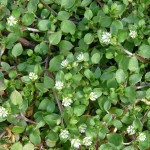
Spring is finally here! And so are the weeds. We have been receiving numerous phone calls about a weed creeping into beds and lawns. It’s pretty, but it just doesn’t belong there is a typical comment. The offending weed is common chickweed. This mat forming winter annual is found through out North America. Common chickweed has a shallow root system so it is easily pulled out. Unfortunately, the entire plant must be pulled out in order to prevent it from popping up again. Common chickweed can be controlled with vegetation control sprays and a pre- emergent weed control. A 1′ thick layer of mulch or wood chips will help to prevent break through. If you prefer an organic approach, ordinary household vinegar works wonders. Just as with non-organic products, be careful not to spray other plant material as they too, will be killed off or damaged from the overspray.
]]>
One of the biggest problem weeds we are seeing is the Crabgrass Imposter, Paspalum. Paspalum, as you can see from the picture looks very much like Crabgrass but does not react the same as crabgrass when treated. There is no pre-emergent for Paspalum. As our customer’s know, The Greenskeeper does 2 applications of pre-emergent crabgrass control. We found several years ago under certain conditions, (like the sporadic yet very heavy rains) the barrier that pre-emergents form can be washed away. A second application assures that the barrier is in place through the entire summer. Paspalum, because it proliferates by both seeds and short rhizomes can not be controlled by a pre-emergent. The difficulty in eradicating this weed is that products used to treat these weeds should not be applied when a lawn is experiencing heat or drought stress as it can damage turf grass. And you guessed it, Paspalum thrives in those conditions.
The next weed we are seeing a great deal of again is Nutsedge. Like Paspalum, Nutsedge is a rhizome. While it does come up in established lawns, we
often see it in newer lawns or lawns where new loam has been brought in. Suddenly, it takes off like wildfire and the entire neighborhood is infected. Nutsedge does not respond to broadleaf weed control and a special product has to be used on this invasive weed. Like the products used to treat Paspalum, it is best to treat Nutsedge when lawns are healthy and not experiencing drought or heat stress. While there is no way to prevent weeds from infiltrating your yard, your Greenskeeper can not only treat weeds but improve the health of you lawn. A healthy lawn will rebound and fill in faster after a problematic season of weeds.
]]>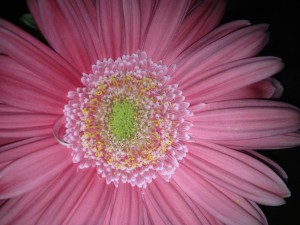
Brighten up your day!
Mother’s Day is coming and one of the most popular gifts is flowers. I love cut flowers and potted plants. One of my favorite is the Gerbera Daisy. I was daunted by the thought of growing this South African Native but have found them to be surprisingly low maintenance and prolific. Gerberas come in a kaleidoscope of colors from muted pastel pinks to saturated coral and red tones. Gerberas like bright light (mine are thriving in a sunny window with fluorescent lights above) They do not like temps above 70 degrees and during blooming need to be kept evenly moist. Between blooms, plants should be allowed to dry out slightly before watering. The flowers are very long lasting both on the plant and off. A single Gerber bloom in a bud vase is a fun festive pick me up for any spot that needs a little brightening up.
Gerbera plants are also a great value. At about $4 for a 4” pot, you can make mom a basket of beauty that she can enjoy for weeks indoors and then plant outside for summer enjoyment.
Another great value is lawn service from The Greenskeeper Lawn, Tree & Shrub Service. What mom wouldn’t love the gift of a lush, green lawn? Call us to surprise your Mom with the gift of lawn care.
]]>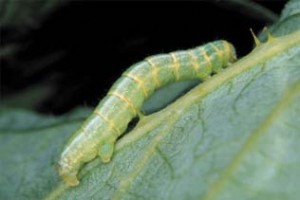 Where are the Caterpillars?
Where are the Caterpillars?
The climate in Massachusetts never ceases to amaze me. Since living on Cape Cod we have had instances when the kids were let out of school early because of a snow emergency. While that’s not an unusual occurrence, it is when the school is reporting 3 inches of snow on the ground with no sign of it letting up and it’s raining at our house, only 4 miles away.
On April 23rd I had business on the South Shore. Driving through Weymouth, I was shocked to see just how far ahead the foliage and flowers on trees and shrubs were in comparison to Cape Cod. While our maples are just budding, those in South Weymouth were covered with brilliant chartreuse leaves waving in the wind. Azaleas, cherries, dogwoods and wisteria vines were in full bloom on sunny side streets. I think the South Shore skipped the month of April and went straight into May. The Cape is at least 2 weeks behind.
What struck me most was the lack of tell tale holes in the tender leaves. On the South Shoreat least, it is possible that some of the vulnerable trees leafed out before the Winter Moth Caterpillar matured. It’s also possible that they are there, but are not active because of the recent cold wet weather. We are urging customers to be vigilant and let us know what they are seeing. Early reports were that Winter Moth would be invasive in pockets. With the warm winter and then record warmth in April, UMASS Extension was reporting that the flora in Massachusetts was ahead of schedule but the Winter Moth appeared unaffected by the temperatures and maturation was just on schedule.
We were getting the same mixed reports from our Greenskeepers in the field. They knew in late April the caterpillars were out out there but were small and not eating. As of today, May 3, we are seeing more activity and have been getting calls to spray all over the south shore.
On a walk this weekend, I got further evidence of how even a small distance can make a difference in winter moth activity.
This is a birch leaf from a tree in my yard. This tree is usually the favorite snack for winter moth.
This is a photo from a tree not far from my house.
Whatever the case may be in your own neighborhood, your Greenskeeper is here to help. If you see any Winter Moth activity we would appreciate an email. Your Greenskeepers are on the South Shore everyday but just as in my own neighborhood, a short distance can mean a big difference in activity.
We are currently scheduling tree spraying on days that are predicted to be dry. Please call if you would like to get on the list.
For more information check out the UMASS Extension website. http://extension.umass.edu/landscape/message/lm-62012
]]>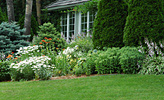 Are You Ready For Spring Lawn Care?
Are You Ready For Spring Lawn Care?
Your Greenskeeper is! If the emails and phone calls we are getting are any indication so are our customers. Here are a handful of tips that will help you and your lawn get off to a great start.
Rake: Spring raking should not be a work out. If you rake too hard, you run the risk of pulling up dormant grass by the roots. The goal here is to remove debris and lightly fluff your grass so that air can adequately circulate.
Clean Up: Pick up sticks, pinecones, stones and anything else that can dull your mower blade or become a projectile when mowing.
Get your motor running: An annual spring tune up is the best way to improve mower longevity and performance. It’s as simple as changing the oil, replacing the spark plug and cleaning or replacing the air filter. If you didn’t do it in the fall, remove the old gas from the gas tank. Check your mower blades and if necessary have them sharpened. Dull blades tear and shred grass making it susceptible to disease. Finally, clean the deck of your mower. Not a do it yourselfer? Be sure to get your mower in for its annual tune up early so your mower is ready when you are.
Call the Greenskeeper Lawn, Tree & Shrub: Spring is the time for fertilizing and crabgrass preventative. Applied through mid May, this first round of treatment has all the right nutrients your lawn needs to get a jump start on the growing season. If you are already a customer, just sit tight, we will be there! Not yet a Greenskeeper customer? Sign up for a free lawn analysis and estimate on our home page. There is no obligation and you might decide that you too deserve a Greenskeeper!
]]>Trees are not only an important part of the beauty of our landscape but they are vital to our ecosystem. They provide oxygen for all living things and a habitat for animals. Some produce fruit or nuts which are important food sources for both humans and animals. But what happens when the tree itself becomes the food source? Without proper treatment, pests can severely compromise the vitality of trees. Pests that might not kill a tree can weaken it enough that secondary pathogens will. These threats can also spread to and infect healthy trees. It’s an ongoing cycle. Property damage and personal injury are a risk as compromised trees are more susceptible to dropping limbs or being blown over or uprooted by adverse weather. Three pests of immediate concern for trees in our region are Winter Moth Caterpillar, Hemlock Wooly Adelgid and The Turpentine Beetle.
Winter Moth Caterpillar: It starts with moths in flight in late fall and early winter. In early spring, your car is covered with pin head sized pellets, the air smells like a litter box and when you walk through your yard, it’s like walking through cob webs. Then you see the culprit, that all too familiar nasty green inchworm. Like many invasive species the Winter Moth is not native to the US. Its origins can be traced back to Europe, where due to numerous natural predators and parasites, its affects were never as devastating as they have been in the northeast United States. After multiple years of attacks from not only winter moth but forest tent caterpillars and gypsy moth in the mid 2000’s, excessive defoliation is taking its toll and many deciduous trees (primarily oak) are showing signs of serious decline. Many trees have died in southeastern Massachusettsover the last 3 years from the stress of this defoliation coupled with drought and other factors. Multiple years of defoliation weakens trees to the point where secondary agents, also known as “weak invaders” can overcome what is left of a tree’s natural defenses, killing the tree. Scientists are experiencing great success in controlling the population, through the use of a natural predator Cyzenis Albicans but Winter Moth persists and scientists are predicting severe defoliation in pockets in pockets in 2012. To combat winter moth early spring horticultural oil is an excellent practice. By coating egg masses before they hatch, population is decreased. A follow up treatment to control populations that did hatch or migrated via wind and rain is suggested a short time later.
Hemlock Wooly Adelgid: This sucking insect was first identified in Massachusettslandscapes in 1988 having spread from an already existing infestation in Connecticut. Wooly Adelgid feeds on the hemlock by sucking sap from the twigs of the host plant. Already compromised trees die within 3 to 5 years of infestation. Healthy trees can live longer. This insect is atypical as it is very active through the winter and fairly inactive during the growing season. The pest is easily identified in its adult stage as it resembles cottonballs on the underside of hemlock needles. Without treatment, mortality is certain.
Black Turpentine Beetle: This pest is one of the most common and serious threats to Japanese Black Pine and Pitch Pine in coastal areas of the Northeast. Pitch pines, which are known for being very tolerant of salt spray and harsh conditions, are being especially hard hit on Cape Cod. Weakened trees emit a pheromone that attracts bark beetles. The beetles chew through the trunk of the already weakened plant to the vascular area, making the pitch flow out. Once that pitch hardens, the beetles re enter and once again, pitch flows out forming a pitch tube. This continues until the all the resin is drained from the tree. The beetles generally colonize trees in the first 8 feet of the trunk so the tell tale holes and pitch tubes are easily identified and something homeowners should be scouting for. It is important for homeowners to removed dead or diseased trees from their property to be less attractive to these invasive beetles and avoid the hazards of falling trees and limbs.
The Greenskeeper Lawn, Tree & Shrub can identify and treat for insects and diseases that are a threat to the health of your trees. Treatment is more environmentally friendly and less costly than removal and replacement of dead and diseased trees. If you think you might have damage from any of these insects or are concerned about the health of your trees, call The Greenskeeper Lawn, Tree & Shrub Service. Our knowledgeable staff will identify pests and present a plan that will have you enjoying your great outdoors for years to come.
]]>